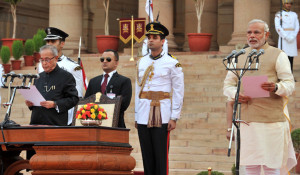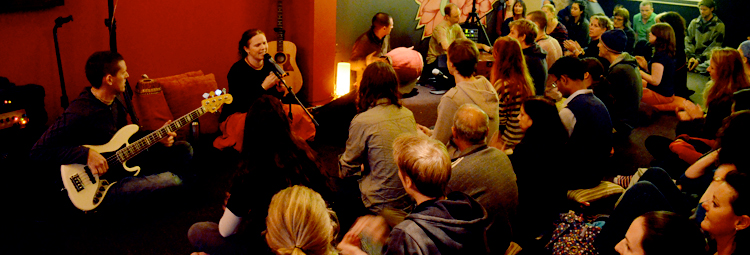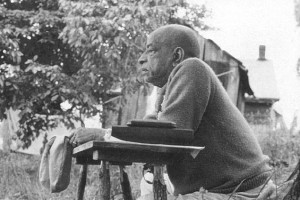This article was published on Sunday, 1-6-14, in the Speaking Tree weekly paper with the title "I promise to." It can also be read here:
http://www.speakingtree.in/spiritual-articles/science-of-spirituality/i-promise-to/147682
Millions watched with eager expectation as the new Prime Minister, Shri Narendra Damodardas Modi, took the oath of service to the nation.
The grand ceremony centered on the grave words of commitment such as “I will do right to all manner of people in accordance with the Constitution and the law, without fear or favour, affection or ill-will.” The script of the oath is so robust and potent that if the cabinet lives by it, India can become a superpower in no time.
The elections have led us to expect a lot from our leaders, but how much can they do without our support? Just as in cricket, a captain can be only as good as the team, so in a country, the head of state can be only as good as the citizens. The Father of our nation, Gandhiji, put it well: “Be the change that you wish to see in the world.” We need to complement the top-down change with bottom-up change – a quiet commitment to honor our words as citizens.
The formalization of trust
We all know that it is not easy to trust the words of others. What to speak of trusting others’ words, we know for ourselves that keeping our word is no small challenge.
When words need to be specially infused with trust, oaths come into play. The public, often ceremonial, declaration of one’s intent brings gravity, legality and even sanctity to the words of commitment. That’s why taking oaths is an activity that cuts across races, cultures and nations. In our times, it manifests in the oath before the magistrate in a courtroom, the vow before the priest during weddings or the declaration of commitment before the employer. It also appears in the reimbursement claims we submit, the tax returns we file and the deeds we sign. In fact, Ram Rajya was glorious because one of its defining features was the principle of honoring of one’s word, come what may. This is enshrined in the famous verse: raghukul riti sadaa chali aayi, pran jaaye par vachan naa jaaye. That motif continues till date with Bollywood featuring Salman proclaiming in Dabaang: Ek baar jo maine commitment kar di, fir main apne aap ki bhi nahi sunta.
But our times are so shallow that even words under oath tend to be without substance. When a suspect solemnly swears to speak the truth, people still tend to be skeptical. Turning the lens on ourselves: do we even remember all the promises we have taken, leave alone keep them?
The Spiritual Foundation of Integrity
Most of us usually want to honor our words. Yet that intent is often sabotaged by, among other things, weakness of character.
How can character be strengthened?
In a culture that provides fixes through pills, pastes and potions, we find no quick-fix for character weaknesses. Perhaps the answer lies in another, subtler p: purification. Purification of our intention from accumulation to contribution, from grabbing to sharing, from me to we.
For such purification, India’s timeless philosophical classic, the Bhagavad-gita, offers a strong intellectual boost. At one level, the Gita’s approach is top-down, for it is spoken to a state ruler, Arjuna, to remind him of his responsibilities. In fact, the Gita (03.21) explicitly emphasizes the role of leaders as social torchbearers.
And yet at another level, the Gita’s approach is bottom-up, because despite its intent to reorient a leader, it doesn’t get into the intricacies of politics and statecraft. Instead it goes straight the to universal heart of all issues: the spiritual substance of our character. The Gita indicates that harmonization with our spiritual side comprises the strongest character-builder. By such harmony, we relish a profound non-material fulfillment that makes us resistant to the pressures and lures that jeopardize our integrity.
Given the Gita’s integrated top-down and bottom-up approach, it’s no surprise that its words resonate with the words of the oath of the nation’s office-bearers. The Gita (02.38) enjoins: “Work without considerations of pleasure-pain, gain-loss and victory-defeat.” Such work, that would be “without fear or favour, affection or ill-will”, is declared later in the Gita (02.50) to be “the art of work.” In fact, such selfless work, the Gita (18.46) indicates, can even become a form of worship.
Two meanings of integrity – and their link
Integrity refers to “the quality of being honest and having strong moral principles,” as in “a man of high integrity.” And it can refer to “the state of being whole and undivided,” as in “the territorial integrity of the country.”
Gita wisdom links these two meanings. It declares that we are parts of the Whole, the Absolute Truth. When we play the part of the part and contribute to the Whole, then the Whole fills the hole in our heart, granting supreme fulfillment. We see that our interest runs not contrary to, but in harmony with the interests of others, for we are all members of one cosmic family centered on the Supreme Spirit. With this inner enrichment coming from spiritual integration, moral integrity naturally develops.
How can we get such spiritual enrichment?
Some prominent ways are yoga, prayer and meditation. Interestingly, in meditational traditions of sonic spirituality, words play a central role. Sacred words embodied in timeless mantras purify us from self-centeredness to selflessness.
Significantly, spiritual fulfillment doesn’t come only from meditational activities that draw us away from the world. It can come even from practical activities that engage us with the world, provided we do those activities in a mood of selfless spiritual service.
Gita wisdom assures that each of us has the power to be an agent of positive change. By going to our spiritual roots and by taking ownership of our words and actions, we all can find the inner strength necessary for change – individually and socially.

 With Radhanath Swami.
With Radhanath Swami.  Thousands of people get the mercy in a crowded Rome while the devotees of Krishna chant and dance happily with enthusiasm and bliss!
Thousands of people get the mercy in a crowded Rome while the devotees of Krishna chant and dance happily with enthusiasm and bliss!  Several local people came running towards our car. We saw the completely surprised looks on their faces. They inquired if we were all fine and went on to say, . “Your god is great, Oh my god! We cannot believe this. We saw how the car was spinning and landed crashing into the drain. We thought you guys are finished. But not even a scratch? Uhhhh!”
In less than a minute, out of nowhere, a tow truck arrived at the scene! It was middle of the night, somewhere at the outskirts of the city, in Accra and a tow truck appearing in less than a minute? Yes, totally unbelievable!
Several local people came running towards our car. We saw the completely surprised looks on their faces. They inquired if we were all fine and went on to say, . “Your god is great, Oh my god! We cannot believe this. We saw how the car was spinning and landed crashing into the drain. We thought you guys are finished. But not even a scratch? Uhhhh!”
In less than a minute, out of nowhere, a tow truck arrived at the scene! It was middle of the night, somewhere at the outskirts of the city, in Accra and a tow truck appearing in less than a minute? Yes, totally unbelievable! 
 O King, constant chanting of the holy name of the Lord after the ways of the great authorities is the doubtless and fearless way of success for all, including those who are free from all material desires, those who are desirous of all material enjoyment, and also those who are self-satisfied by dint of transcendental knowledge. SB 2.1.11
O King, constant chanting of the holy name of the Lord after the ways of the great authorities is the doubtless and fearless way of success for all, including those who are free from all material desires, those who are desirous of all material enjoyment, and also those who are self-satisfied by dint of transcendental knowledge. SB 2.1.11 







































 900 people got prasadam-cooked meal as well as sandwiches and apples, each day. Devotees come to a village, place their table on the street and invite everyone.
Our devotees tirelessly serve from 5:30 am until 10pm every day for the last 15 days.
900 people got prasadam-cooked meal as well as sandwiches and apples, each day. Devotees come to a village, place their table on the street and invite everyone.
Our devotees tirelessly serve from 5:30 am until 10pm every day for the last 15 days.  There may be discrepancies in pronouncing the mantras and observing the regulative principles, and, moreover, there may be discrepancies in regard to time, place, person and paraphernalia. But when Your Lordship's holy name is chanted, everything becomes faultless. SB 8.23.16
There may be discrepancies in pronouncing the mantras and observing the regulative principles, and, moreover, there may be discrepancies in regard to time, place, person and paraphernalia. But when Your Lordship's holy name is chanted, everything becomes faultless. SB 8.23.16  My dear King, the chanting of the holy name of the Lord is able to uproot even the reactions of the greatest sins. Therefore the chanting of the sankirtana movement is the most auspicious activity in the entire universe. Please try to understand this so that others will take it seriously. SB 6.3.31
My dear King, the chanting of the holy name of the Lord is able to uproot even the reactions of the greatest sins. Therefore the chanting of the sankirtana movement is the most auspicious activity in the entire universe. Please try to understand this so that others will take it seriously. SB 6.3.31 

 Simply because I chanted the holy name of the Lord in the association of devotees, my heart is now becoming purified. Therefore I shall not fall victim again to the false lures of material sense gratification. Now that I have become fixed in the Absolute Truth, henceforward I shall not identify myself with the body. I shall give up false conceptions of "I" and "mine" and fix my mind on the lotus feet of Krishna. SB 6.2.38
Simply because I chanted the holy name of the Lord in the association of devotees, my heart is now becoming purified. Therefore I shall not fall victim again to the false lures of material sense gratification. Now that I have become fixed in the Absolute Truth, henceforward I shall not identify myself with the body. I shall give up false conceptions of "I" and "mine" and fix my mind on the lotus feet of Krishna. SB 6.2.38 

















 Therefore it should be understood that one is easily relieved from all sinful reactions by chanting the holy name of the Lord and chanting of His qualities and activities. This is the only process recommended for relief from sinful reactions. Even if one chants the holy name of the Lord with improper pronunciation, he will achieve relief from material bondage if he chants without offenses. Ajämila, for example, was extremely sinful, but while dying he merely chanted the holy name, and although calling his son, he achieved complete liberation because he remembered the name of Näräyaëa. SB 6.3.24
Therefore it should be understood that one is easily relieved from all sinful reactions by chanting the holy name of the Lord and chanting of His qualities and activities. This is the only process recommended for relief from sinful reactions. Even if one chants the holy name of the Lord with improper pronunciation, he will achieve relief from material bondage if he chants without offenses. Ajämila, for example, was extremely sinful, but while dying he merely chanted the holy name, and although calling his son, he achieved complete liberation because he remembered the name of Näräyaëa. SB 6.3.24 
